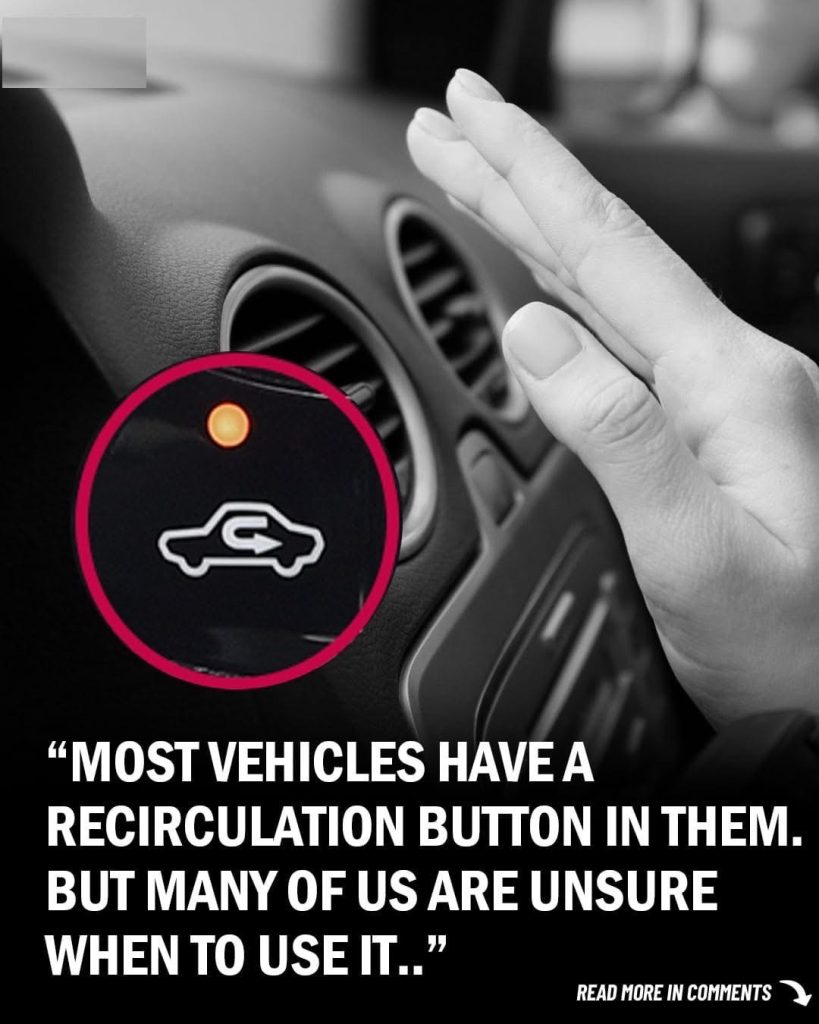
Contemporary automobiles are furnished with a myriad of buttons and symbols, each performing a specific task within the intricate machinery that propels us onward. Amidst this labyrinth of dashboard controls, there exists a seemingly inconspicuous button – the air recirculation button. While it may not attract the same level of attention as the air conditioning controls, the air recirculation button plays a vital role in upholding cabin comfort and air quality. In this piece, we will demystify the workings of this button, delving into its mechanisms, advantages, and the circumstances where its efficacy truly shines.
The Air Recirculation Button: A Breath of Fresh Air
Within the realm of automotive controls, the air recirculation button stands as a protector of in-cabin air quality. This feature, often symbolized by an illustration of a car with a curved arrow, is engineered to circulate the air already present inside the vehicle rather than drawing in external air. As per Eden Tyres & Servicing, engaging the air recirculation button effectively reuses air within the cabin, ensuring that the air conditioning system cools the pre-chilled interior air rather than perpetually cooling incoming hot air.
The concept behind this function is not solely about sustaining a comfortable temperature; it is about enhancing efficiency. When the air conditioning is activated and the recirculation mode is enabled, the system can cool the air more rapidly and with less exertion, leading to enhanced fuel efficiency. Furthermore, this mode acts as a shield against outdoor pollutants, exhaust fumes, and allergens, establishing a cleaner and healthier environment for the occupants.
Advantages Beyond Comfort
The air recirculation button is not merely a comfort enabler; it is an intelligent tool that contributes to a more effective and enjoyable driving experience.
Enhanced Fuel Efficiency

As highlighted by The Wall Street Journal2, utilizing the air recirculation mode can lead to enhanced fuel efficiency. Reusing already cooled interior air consumes less energy than continually cooling down the hotter external air. This not only conserves fuel but also diminishes the strain on the air conditioning system, potentially prolonging its longevity.
Purer Air, Healthier Environment

The quality of the air is a paramount concern, particularly in urban areas teeming with pollution. The air recirculation button acts as a barrier against pollutants and allergens. By utilizing recirculated air, drivers can considerably diminish their exposure to external contaminants, thereby establishing a safer and more comfortable cabin environment.
Tranquil Ride, Reduced Stress
The benefits extend beyond air quality. Reutilizing the interior air can result in a quieter ride by minimizing the noise from bustling streets. Furthermore, by lessening the workload on the air conditioning system, the vehicle’s components are subjected to less stress, potentially leading to fewer maintenance requirements and prolonged performance.
Instances to Utilize and Not to Utilize the Recirculation Button
The air recirculation button excels in specific situations, optimizing the driving experience and safeguarding the well-being of passengers.
High Temperatures:
While driving in hot weather, especially amidst a heatwave, activating the air recirculation mode can assist the air conditioning system in cooling the cabin more efficiently, offering a swifter escape from scorching temperatures.
Polluted Locations:

In regions with elevated pollution levels, such as heavy traffic or industrial areas, enabling the recirculation mode shields the cabin from harmful exhaust fumes and pollutants, preserving the health of occupants.
Eliminating Odors:

Encountering a pungent odor from a nearby landfill or factory? The air recirculation mode prevents these unpleasant odors from infiltrating the cabin, allowing you to continue your journey in comfort.
Instances to Avoid Usage
Although the air recirculation mode offers an array of benefits, there are circumstances where utilizing it may not be advisable.
Winter Driving:

During cold weather, excessive use of the recirculation mode can lead to foggy windows due to trapped moisture. It is preferable to allow fresh air circulation, aiding in quicker defogging and maintaining clear visibility.
Extended Duration Usage:

Prolonged usage of the recirculation mode in sealed vehicles can result in elevated carbon dioxide levels. It is recommended to intermittently switch to fresh air mode, particularly during lengthy drives, to uphold a healthy cabin environment.
Respiratory Issues:

If you or your passengers suffer from respiratory problems or allergies, opting for the fresh air mode may be more suitable to minimize the circulation of potentially stale or contaminated air.
Mastery of the Air Recirculation Button
The unassuming air recirculation button harbors the potential to revolutionize your driving experience. By comprehending its functions and advantages, you can wield it effectively to establish a cleaner, more comfortable cabin environment, all while boosting fuel efficiency and advocating for prolonged vehicle well-being. Whether combatting urban pollution, escaping unpleasant odors, or navigating extreme weather conditions, the air recirculation button proves to be an essential instrument for every contemporary driver. Therefore, the next time you embark on the open road, armed with knowledge, press that button and embrace the refreshing, cleaner air enveloping you.